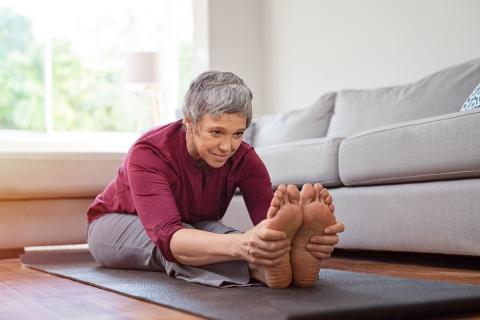Always Put Your Best Foot Forward
See a Podiatrist
Podiatrists specialize in treating the foot, ankle, and related structures of the leg. Consistent foot pain, leg pain, bunions, discolored toenails, and corns should be evaluated by a podiatrist, especially for older adults. Regular foot checkups from your podiatrist can help identify problems like hammertoe, ingrown toenails, warts, or problematic wounds before they become serious.
A podiatrist can recommend shoe inserts and leg braces to help with pain and mobility. If you are concerned about the cost of regular foot care, Medicare Part B covers podiatrists if you have diabetes-related nerve damage or need medically necessary treatment for foot injuries or disease.
Pamper Your Feet
Reward yourself (and your feet) with a pampering pedicure. Not only do they feel amazing and make your feet look great, but they also force you to sit down and relax. Biweekly pedicures can help foot health with toenail trimmings, sea salt scrub, and foot and leg massages.
Invest in Quality Shoes
Choose footwear that fits properly. For example, shoes that slide or rub your heel when you walk can cause blisters, bunions, and other injuries. In addition, comfortable well-fitted shoes can help you maintain your balance, avoid falls, and reduce injuries.
When shopping for shoes, always:
- Have your feet measured
- Purchase your correct size
- Try on shoes and walk around in the store before you make a purchase
- Return shoes if they don’t fit properly
There’s no reason to suffer in shoes that don’t fit well. Today’s shoe selections offer both style and comfort.
Monitor Changes in Your Feet
Diabetic neuropathy and arthritis can cause changes in your feet. If you experience pain, tingling, numbness, stiffness, or inflammation in your feet or ankles, schedule an exam with your primary care physician or podiatrist.
Keep Your Feet Moisturized
Dry feet are more susceptible to cracking, flaking, skin breaking, and sores. Applying a quality foot lotion daily will lock in moisture and keeps feet soft and supple.
Foot care doesn’t have to be complicated. These simple tips keep your aging feet feeling and looking great throughout your golden years.
